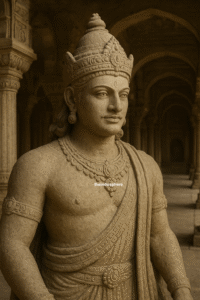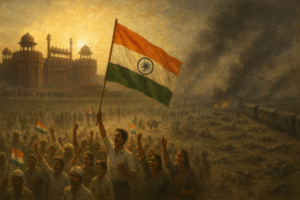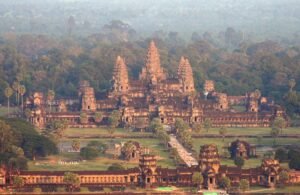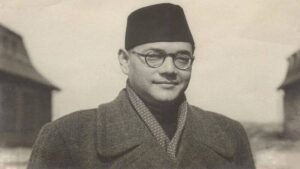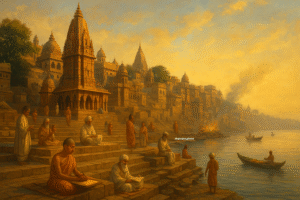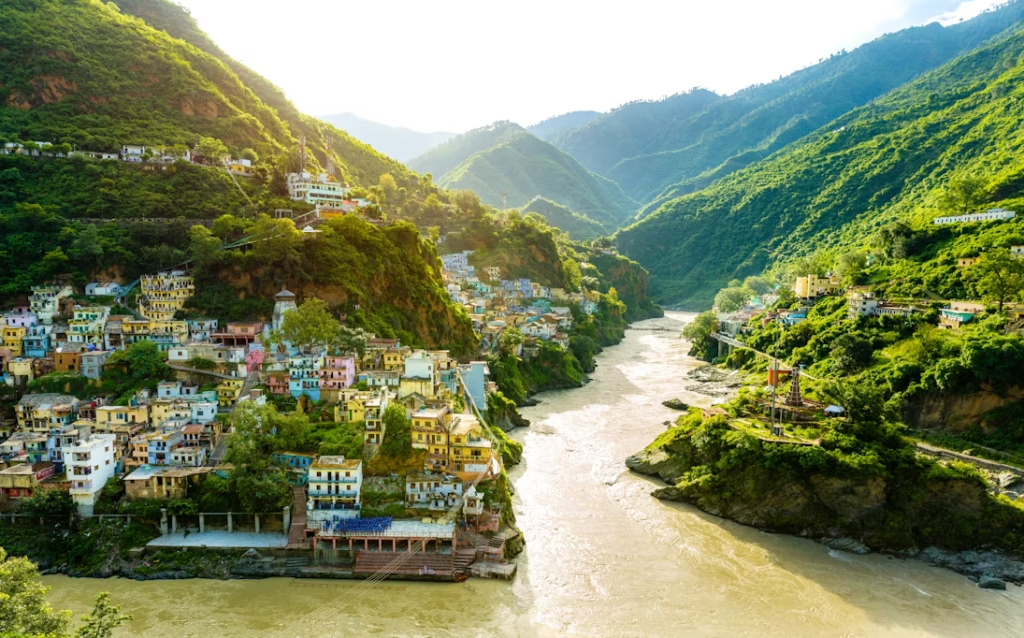
Introduction: Between Sky and Earth
Uttarakhand is not merely a state in northern India; it is a living museum of civilization, geography, and faith. Known since antiquity as Devbhumi — the Land of the Gods — it is home to some of India’s most sacred shrines, dramatic landscapes, and deeply rooted cultural traditions. From prehistoric rock shelters to the dynasties that ruled its valleys, from the songs of shepherds to the echo of conch shells in Himalayan temples, Uttarakhand embodies the continuity of India’s past and the aspirations of its present.
To write of Uttarakhand is to chart the story of people living amidst mountains, negotiating survival with beauty, faith with practicality, and modernity with timelessness. This is that story, told in layers: history, culture, sacred geography, and contemporary life.
Prehistoric and Ancient Origins
Archaeological evidence shows human presence in Uttarakhand since the Paleolithic and Mesolithic ages. Rock paintings at Lakhu Udyar (Almora district) and stone implements from Kumaon confirm that prehistoric communities lived and thrived in the region. The megalithic stone circles and cairns found across Kumaon and Garhwal indicate burial practices and a sophisticated relationship with the land.
In the Vedic age, Uttarakhand appears as the setting for penance and meditation. The forests of Badrinath and Kedarnath are mentioned in Mahabharata and Puranas; sages such as Vyasa, Vashishta, and Vishwamitra are said to have composed hymns in these very valleys. The Pandavas’ Mahaprasthana (final journey to the Himalayas) enshrined the mountains as gateways to liberation.
Dynasties and Kingdoms
The political history of Uttarakhand unfolds through a succession of dynasties that ruled the Kumaon and Garhwal regions.
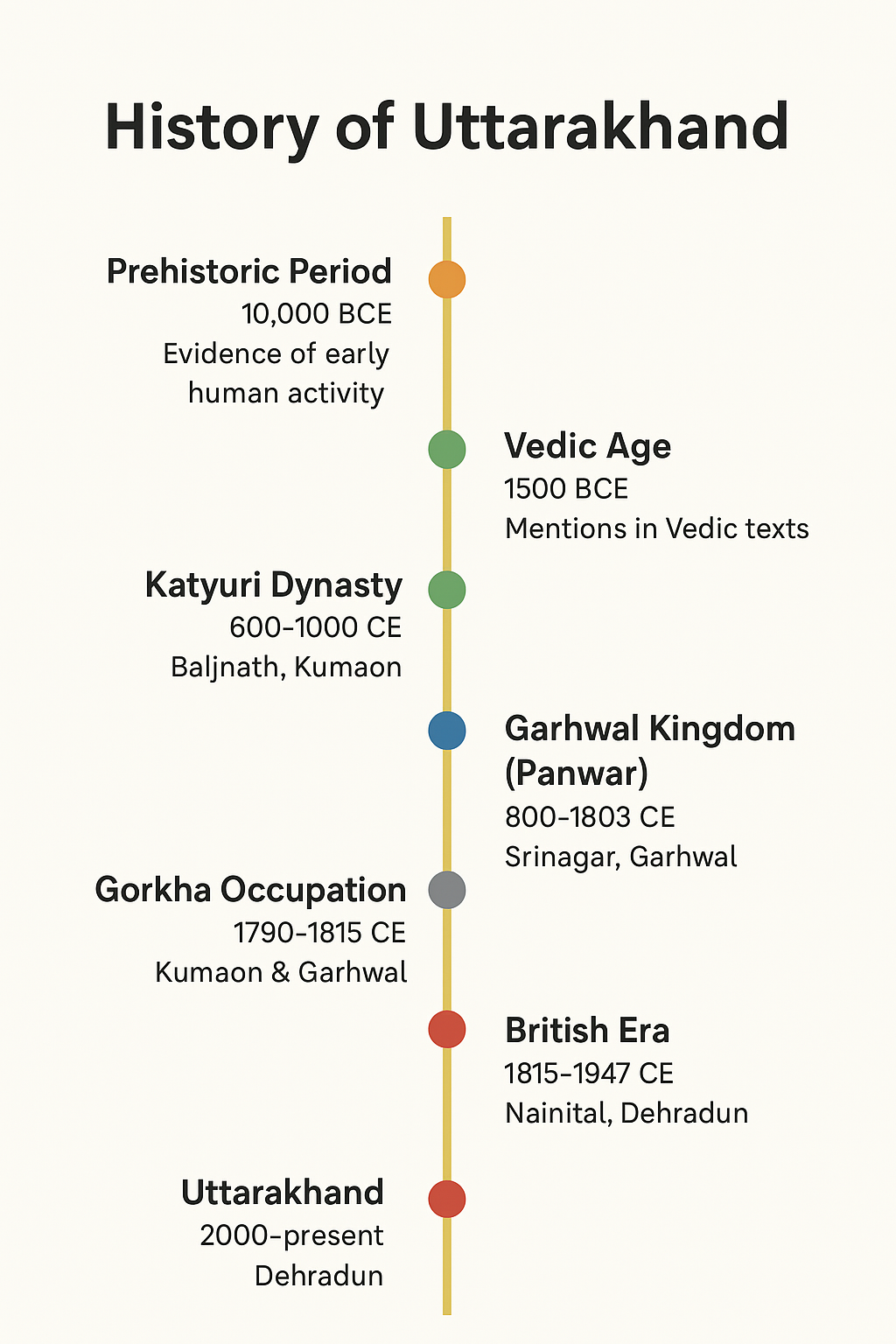
- Katyuri Dynasty (7th–11th century)
The first great rulers of Kumaon, the Katyuris established their capital at Baijnath (Katyur valley). They built hundreds of temples, including the Jageshwar cluster, dedicated to Shiva. Their reign extended from the foothills into western Nepal, marking an era of prosperity and temple-building. - Chand Dynasty (11th–18th century)
The decline of the Katyuris gave way to the Chand dynasty, beginning with Som Chand who shifted the capital to Champawat and later to Almora. The Chands patronized art, culture, and architecture, blending Indo-Tibetan influences. Almora flourished as a cultural hub where temples like Nanda Devi and Kasar Devi rose. - Garhwal Kingdom (Panwar/Parmar Dynasty, 14th–19th century)
In Garhwal, Ajay Pal consolidated 52 small forts (garh) into a unified kingdom, with Srinagar (Garhwal) as the capital. The dynasty resisted Mughal and later Gorkha invasions, leaving behind forts, temples, and rich folklore. - Gorkha Rule (1791–1816)
Nepalese Gorkhas invaded Kumaon and Garhwal, imposing harsh taxes and ruthless administration. Their occupation lasted 25 years until the Anglo-Nepalese War. - British Era (1816–1947)
The Treaty of Sugauli ended Gorkha rule. Eastern Garhwal and Kumaon came under British control as the Kumaon Division, while Tehri Garhwal remained a princely state under Panwar rulers. The British developed Nainital and Mussoorie as hill stations, built roads, and experimented with tea plantations. Resistance simmered: local peasants fought forest laws, and leaders from the hills joined India’s independence movement. - Tehri State
The princely state of Tehri retained autonomy under the Panwar kings until 1949 when it was merged into the Indian Union. Tehri’s legacy of semi-independence preserved distinct traditions of governance and landholding.
Cultural Landscape
Uttarakhand’s culture is both deeply regional and universally Indian.
- Languages: Garhwali and Kumaoni dominate, with dialectal variations across valleys. These languages carry oral literature, riddles, and ballads.
- Music & Dance: Folk music reflects agrarian life, devotion, and heroism. Instruments like the dhol, damau, and turri accompany dances such as Chholiya (martial dance) and Jhora (circle dance). Jagars — ritual performances to invoke local deities and ancestral spirits — are central to Garhwali culture.
- Festivals: Besides pan-Indian festivals, Uttarakhand has unique celebrations:
- Nanda Devi Raj Jat Yatra (a pilgrimage every 12 years).
- Kumbh and Ardh Kumbh at Haridwar.
- Local fairs (melas) such as Uttarayani (Bageshwar) and Devidhura.
- Cuisine: Mountain food emphasizes grains like mandua (finger millet) and jhangora (barnyard millet). Signature dishes include chainsoo (black gram curry), aloo ke gutke, ras-bhatt, and desserts like bal mithai and singori.
- Textiles & Craft: Handwoven woolens, pichhaura (traditional red and yellow women’s veil), ringaal bamboo work, and wood carving represent artisanal continuity.
- Architecture: Temples combine wood and stone, with shikharas influenced by Nagara style. Houses in remote villages use deodar wood, slate roofs, and intricately carved door frames.
Sacred Geography
Faith in Uttarakhand is inseparable from its mountains and rivers.
- Char Dham Yatra: Kedarnath, Badrinath, Yamunotri, and Gangotri remain the heart of Hindu pilgrimage. Each shrine is a geographical marvel: glaciers, hot springs, and high-altitude passes mark the routes.
- Other Shrines: Haridwar, Rishikesh, Hemkund Sahib (Sikh shrine), and countless village deities (Gram Devtas). Nanda Devi is worshipped as the supreme goddess of the region.
- Sacred Rivers: Ganga and Yamuna originate in Uttarakhand. Gaumukh glacier is considered the mouth of Ganga, while Yamunotri glacier gives birth to Yamuna. Pilgrimage here is both physical and spiritual, demanding endurance and reverence.
Society and Economy of the Hills
Life in Uttarakhand has always been shaped by its environment.
- Agriculture: Terrace farming is the backbone, with hardy crops like millets, pulses, and potatoes. Traditional practices ensured sustainability.
- Pastoralism & Transhumance: Communities like the Bhotiyas practiced seasonal migration between high-altitude pastures and valleys, trading with Tibet until the 1962 Sino-Indian war.
- Forests: Sacred groves and community forests reflect ecological wisdom. However, colonial forest laws restricted local use, leading to resentment.
- Trade Routes: Historically, routes through Uttarakhand connected India to Tibet, carrying salt, wool, and grains.
Environmental Movements and Statehood
The 20th century saw Uttarakhand at the forefront of ecological struggles.
- Chipko Movement (1970s): Led by village women, communities hugged trees to prevent commercial felling. This movement became a global symbol of grassroots environmentalism.
- Anti-Tehri Dam Struggle: The submergence of old Tehri town sparked resistance against large dams and displacement.
- Statehood Agitation: Hill people demanded a separate state for better governance, citing ecological fragility and cultural distinctiveness. On 9 November 2000, Uttaranchal was created; in 2007, it was renamed Uttarakhand.
Contemporary Uttarakhand
Modern Uttarakhand is defined by paradoxes:
- Tourism: From Char Dham Yatra to adventure sports and wildlife tourism (Jim Corbett National Park), tourism fuels the economy.
- Migration: Economic challenges have created “ghost villages” as people migrate to cities.
- Natural Disasters: Flash floods, landslides, and glacial retreats pose existential risks. The 2013 Kedarnath floods remain a stark reminder of Himalayan vulnerability.
- Urban Growth: Dehradun, Nainital, Haridwar, and Haldwani are growing urban centers, balancing tradition with modernity.
Conclusion: The Mountain Soul
Uttarakhand’s identity is inseparable from its geography and history. Its story is one of resilience: dynasties rose and fell, invaders came and went, but the people endured with songs, rituals, and an unbroken bond with their land. Today, as Uttarakhand negotiates between being a spiritual heartland and a modern state, its cultural and natural heritage remain its greatest strength.
To understand Uttarakhand is to understand how landscape shapes civilization. It is the mountain soul of India — steadfast, sacred, and eternal.

